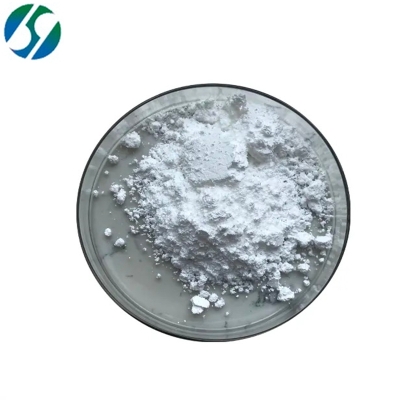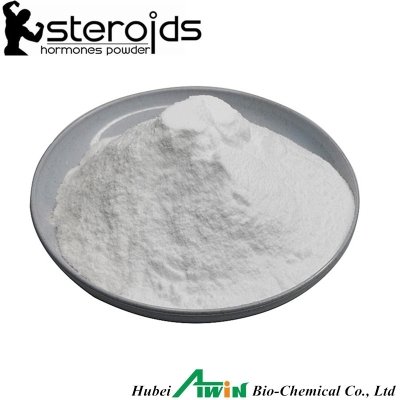-
Categories
-
Pharmaceutical Intermediates
-
Active Pharmaceutical Ingredients
-
Food Additives
- Industrial Coatings
- Agrochemicals
- Dyes and Pigments
- Surfactant
- Flavors and Fragrances
- Chemical Reagents
- Catalyst and Auxiliary
- Natural Products
- Inorganic Chemistry
-
Organic Chemistry
-
Biochemical Engineering
- Analytical Chemistry
- Cosmetic Ingredient
-
Pharmaceutical Intermediates
Promotion
ECHEMI Mall
Wholesale
Weekly Price
Exhibition
News
-
Trade Service
salud360.cienradios diabetes is one of the leading causes of death worldwide and significantly increases the risk of severe COVID-19 deaths.
2019 figures from the International Diabetes Federation (IDF) predict that the number of people with diabetes will grow by 51% globally to 700 million by 2045.
, the overall prevalence rate has been increasing since the 1970s, with the highest prevalence rate in northeast China.
are rarely able to recover from medication, and the vast majority can only control blood sugar through medication.
with the development of medicine, metabolic surgery has gradually become one of the means of diabetes treatment.
prevalence of T2DM in the geographic region of idf.org.
trends in subgroup analysis by geographic region.
the darker the color, the higher the prevalence of Prevalence of type 2 diabetes mellitus among inland residents in China (2000-2014): A-meta analysis. DOI: 10.1111/jdi.12514 Metabolic surgery refers to various surgical procedures used to control metabolic diseases such as diabetes and obesity, which can be performed in obese and/or diabetic patients with a BMI of approximately 28 to 30, initially for bariatric surgery to treat obesity.
2017 edition of the Diabetes Medical Standards released by the American Diabetes Society changed the name of bariatric surgery to metabolic surgery, further highlighting the role of surgery in improving abnormal metabolism in obese patients.
gastric bypass surgery (Roux-en-Y Gastric Bypass surgery, GBP) and bile pancreatic reflow (Biliopancreatic Diversion, BPD) are two metabolic operations.
GBP limits calorie absorption by shrinking the stomach to the size of an egg, bypassing parts of the small intestine (the heteum and empty intestine) and connecting it to the middle of the small intestine.
BPD is to remove the far end of the stomach, and the upper residual stomach and the end of the small intestine match, the bile pancreas branch and the distance back to the blind valve 50 cm of the re-intestinal match, the bile pancreatic fluid to the return, reduce the bile pancreatic fluid and food mixing time, and thus reduce digestion and absorption.
. Media.wustl.edu Despite evidence that metabolic surgery can improve diabetes quickly and significantly, in most countries, less than 1% of patients can undergo surgery.
, especially during the current pandemic, surgery is delayed longer than other options.
, metabolic surgery is more effective than medication and lifestyle interventions in controlling severe type 2 diabetes (T2DM), according to a randomized clinical trial that has been followed for the longest time to date.
study, published in The Lancet, found that more than a third of surgically treated patients did not develop diabetes during the entire 10-year follow-up period.
2009, the American Diabetes Association defined the "cure" of diabetes as a state of disease relief that lasts more than five years.
study shows that T2DM "cure" can be achieved in the most rigorous types of clinical investigation.
the study involved 60 patients with severe T2DM who were randomly treated with medication plus lifestyle intervention or metabolic surgery (GBP or BPD).
study, all patients were severely ill, had poor blood sugar levels, and had a history of diabetes of more than 5 years.
over time, GBP and BPD bring mitigation probability.Metabolic surgery versus weather medical therapy in patients with type 2 diabetes: 10-year follow-up of an open-label, single-center, randomized controled trial. DOI: The results showed that over a 10-year study period, 37.5 percent of surgically treated patients were able to maintain non-diabetic blood sugar without taking diabetes medications.
the report's author, Professor Francesco Rubino, consultant in surgery at King's College Hospital in London, said the findings provided the strongest scientific evidence yet that T2DM was a curable disease rather than an inevitable and irreversible one.
Over time, the study looked at the early and long-term safety of different intervention strategies in patients in the drug therapy (red line), GBP (blue line) and BPD (green line) groups with blood sugar levels (Figure B) and weight changes (Figure C).
patients with BPD had a higher rate of severe adverse events, including those related to disease and intervention, than the other two groups of subjects.
the risk of severe adverse events was significantly higher in patients who received traditional medical treatment than those who underwent GBP surgery.
fact, many researchers believe that surgery better controls overall metabolism, reduces cardiovascular risk, and improves kidney function and quality of life than traditional medical treatments.
notably, the incidence of diabetes-related complications decreased significantly in patients undergoing surgery, including adverse events in the heart, kidneys and nervous system, as well as reduced use of medications, including those for diabetes, high blood pressure, and blood lipid abnormalities.
in a commentary published in the Lancet at the same time, Professor Carel W le Roux of University College Dublin and Dr Alexander D Miras, of Imperial College London, point out that important evidence from the study is making up for our unknowns and will gradually change the attitudes of diabetes experts and patients.
controlled trial data from previous metabolic surgery were usually followed by a shorter follow-up period, and the 10-year data were convincing.
, and over the past 12 years, 12 other randomized controlled trials have shown consistent findings.
, metabolic surgery improves diabetes and reduces the risk of complications is not the first reported.
, published in mid-January in the JAMA sub-journal Ofthalmol by a team at the University of Uppsala Clinical Research in Sweden, showed a reduced risk of developing diabetic retinal lesions (DR) after GBP surgery.
(Association of Gastric Bypass Surgery With Risk of Developing Diabetic Retinopathy Among Patients With Obesity and Type 2 Diabetes in Sweden: An Observational Study. DOI: 10.1001/jamaophthalmol.2020.5892)。
A 2020 study published in the New England Journal of Medicine (NEJM) found that post-surgery weight loss drives metabolic improvements in severely obese diabetics, such as lower blood sugar levels throughout the day, increased sensitivity to insulin in the liver, muscle and adipose tissue, and reduced demand for insulin and other diabetes drugs.
, however, the study did not provide follow-up data for more than five years.
Effects of Diet versus Gastric Bypass on Metabolic Function in Diabetes.DOI: 10.1056/NEJMoa2003697 Prior to this, observational cohort studies by the medical team at the University of Erebus in Sweden also confirmed the benefits of GBP in patients with obesity and T2DM.
But it is well known that diabetic wounds are not easily healed because diabetic terminal nerves and blood vessel abnormalities, especially blood vessels, affect the blood supply of tissue around the wound, so healing is slow or prone to fat liquefaturization, wound cracking.
the study describes postoperative complications.
Pros and cons of gastric bypass surgery in individuals with obesity and type 2 diabetes: nationwide, matched, observational cohort study. DOI: 10.1136/bmjopen-2018-023882A-F Cumulative incidence of postoperative complications, all-cause mortality, congestive heart failure, kidney disease in 9 years of follow-up; , malnutrition, mental illness and alcohol abuse A-F in 9 years of follow-up, the cumulative incidence of postoperative complications, gastrointestinal surgery, abdominal pain; Results of intestinal obstruction, gallstones, gallbladder disease, wound complications, and plastic surgery showed that GBP reduced the risk of total cause mortality (49%) and cardiovascular disease (34%), and positive effects were found to have a positive effect on severe kidney disease, but the risk of several short-term complications after GBP increased significantly (2x to 9x), such as abdominal pain and gastrointestinal diseases, requiring additional surgery in addition to reconstructive plastic surgery.
in the long term, the risk of anemia was 92 per cent higher, malnutrition occurred about three times as often as in the undiagnosed control group, 33 per cent more frequently diagnosed with mental health, and three times more likely to drink alcohol than in the unsealed control group.
Eliasson, M.D., M.D., of the University of Gothenburg and lead author of the study, said surgery should be performed strictly in accordance with surgical treatment adaptation standards and provide long-term monitoring and support after surgery to maximize benefits and minimize the risk of complications.
metabolic surgery to treat adhesives was proposed by the National Institutes of Health in 1991 and has been revised and expanded over the years.
severe and untreated psychiatry and alcohol or substance abuse or eating disorders are taboos for surgery, the decision to provide surgical treatment should always be based on the stability of the condition and a personalized assessment by the multidisciplinary treatment team.
pixabay, with the growing understanding of the complex pathophysiology of the development of T2DM, coupled with advances in medical treatment and the accumulation of expertise in metabolic surgery, people's perception of T2DM has gradually changed from "treatable" to "potentially curable" chronic diseases.
today's research is a landmark development in the treatment of diabetes in humans, but given the other complications, surgical doctors and patients need to consider many things.
Oranhgy Source: MedSci Original Copyright Notice: All text, images and audio and video materials on this website that state "Source: Met Medical" or "Source: MedSci Original" are owned by Mets Medicine and are not reproduced by any media, website or individual without authorization, and must be reproduced with the words "Source: Mets Medicine".
all reprinted articles on this website are for the purpose of transmitting more information and clearly indicate the source and author, and media or individuals who do not wish to be reproduced may contact us and we will delete them immediately.
at the same time reproduced content does not represent the position of this site.
leave a message here







